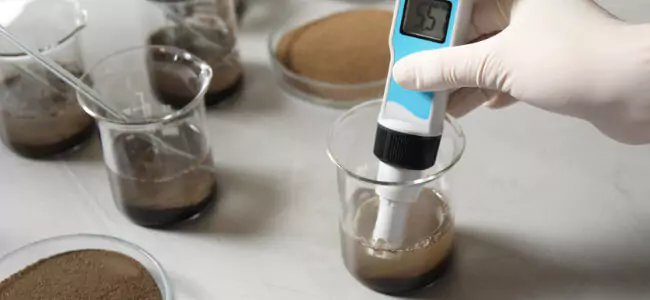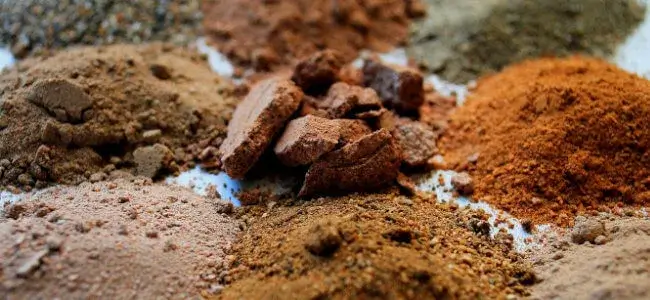The importance of septic tank pH

TABLE OF CONTENTS
pH (pondus Hydrogenium) refers to the measure of hydrogen ion concentration in water. The concertation of the hydrogen ion determines the alkalinity or acidity of the water. An increase in acidity results in a lower pH while an increase in alkalinity indicates a high pH. Acidity and alkalinity of wastewater are very crucial because they have far-reaching consequences on the wastewater treatment and ultimately, on the environment. On average, the pH for domestic wastewater is in the range of 6.5-8.0. But for bacteria to thrive in the septic tank, a pH of 6.5-7.5 is needed. It is therefore vital to maintain the wastewater in the septic tank within this range of pH in order to keep the microorganisms alive and well. When the septic tank pH gets higher than the recommended range, microbial activity will be inhibited. At pH levels of above 9, fungi are favored over bacteria in terms of competing for food so even the bacteria that survive the high pH will still be in an unfavorable environment.
A healthy septic tank (for bacteria) is one where the pH of the wastewater is maintained by creating a balance amongst hydrogen-forming, acid-forming bacteria and the methane-forming bacteria. Acidity is usually more inhibitory to the methane-forming bacteria than their acid-forming counterparts. Most of the methane-forming bacteria can function in a pH range of 6.7-7.4 but their optimal range is 7.0-7.2. They may however not function very well when the pH gets to 6.0. The process of producing organic acids by hydrogen forming and acid-forming bacteria can lower the pH of the septic tank. In an ideal scenario, this reduction of the pH value is buffered by the bicarbonate that is produced by the methane-forming bacteria. In other words, in a stable septic tank, the pH levels will remain balanced (close to neutral) and bacteria will continue to flourish.
Additives and septic tank pH
The environmental conditions in the septic tank are anything but ideal. This is mostly due to the household products that are sent down the drain that ends up altering the pH value of the tank. Excess organic loading and change in temperature could also result in the pH imbalance of the septic tank environment. In such a scenario, the organic acids are produced at a quicker rate than they can be decomposed by the bacteria. If this goes unchecked, the pH can drop to unacceptably low levels. When the pH drops this way, methane production can stop and that will result in the septic tank “going sour.” This is one of the main reasons why septic tanks release sharp odors. Retuning the pH levels back to neutral is usually sufficient to correct this usually done through the addition of septic tank additives. However, not all septic tank additives are made equal. There are two broad categories of septic tank additives; chemical and biological and so not all of them are good for the septic system.
Chemical additives
Chemical additives are usually comprised of alkaline compounds, solvents, buffers, and surfactants. These compounds are made from different chemicals which might actually make the problem worse. Here are some of the compounds found in chemical additives that might do your system more harm than good.
Calcium – the rationale behind using calcium in the chemical additives is that calcium will raise the pH levels of the septic tank thereby allowing the bacteria to function properly. The septic tank usually decreases the pH naturally due to the anaerobic activity so calcium can bring the pH back to optimum levels. The problem, however, is that calcium can raise the pH too high until the bacteria are killed in the process. If this happens, solid waste will not be digested which could result in the blocking of the drain field.
Sodium bicarbonate – Sodium bicarbonate is better than calcium as a buffering chemical because instead of adding the pH, it adds the alkalinity. This is a safe approach because you don’t have to worry about raising the pH too much like it would be the case with calcium. The main weakness of this approach is that it is based on the assumption that the tank already has sufficient bacteria that only need a conducive environment to work more efficiently. In other words, if most of the bacteria had already died, the additive might also not be very successful.
Surfactants/ Flocculants – these work by reducing the surface tension between the molecules. Soap is an example of a surfactant and it joins FOGs (Fats, Oils, and Grease) with water in order to allow it to flow freely. Additives that have surfactants and flocculants are therefore often used by some people to degrease and unclog their drains. But this same quality actually makes them very bad for the septic system because they allow the FOG to mix with water and thereby flow easily into the drain field. Once in the drain field, they can cause many problems including blocking of the drain field and contamination of groundwater. The only exception is surfactants that are made by combining biosurfactants and bacteria. These biological degreasers actual break down and digest the FOG and so they do not pose a challenge to the septic system.
There are many kinds of chemical additives and some may use other components but the common denominator with all of them is they do not add any bacteria or enzymes to the system. Chemical additives either try to increase the pH or alkalinity because they work on the assumption that the septic tank has enough healthy bacteria. This can be a problem in most homes where bacteria are killed by harmful household products.
Biological additives
Unlike chemical additives, biological additives are made from enzymes and bacteria. When you add them to the system, the helpful bacteria, and enzymes into the septic tank. For instance, bio-sol’s septic tank biological additives will introduce billions of bacteria and enzymes into the septic tank in a single flush. Some people believe that the human body produces enough bacteria through the digestion process which are ultimately passed into the septic tank through human waste. However, the human body only produces bacteria that are designed to function at body temperature and in a balanced pH. The use of products that are toxic to bacteria in the home also ends up killing most of the bacteria anyway. Biological additives are usually made from bacterial strains that can withstand the unique environment of the septic tank including the fluctuations in temperatures as well as the changes in the pH. This is the reason why biological additives are more effective in restoring balance and efficiency in the septic tank as opposed to the chemical additives.
Evaluation of treatment
The purpose of evaluating the treatment of a septic tank is to establish if the pH is at optimum values for microbial activity. When you open the septic tank, a strong odor will most likely be emitted and this usually points to a pH imbalance. If there is a low pH in the tank, you can expect an acidic smell that absorbs readily into clothing and is not easy to get rid of. If the pH is high, the odor emitted will smell like a chemical or cleaner that was used at the source of the wastewater. A high pH can be occasioned by certain detergents, cleaning agents, chemical products or too much alkalinity in the water source. Some of the factors that lead to a pH that is too low (acidic conditions) include low alkalinity in the water supply, acidic cleaners, and even over-use of some beverages (coffee, soda, and dairy products). Nitrification is another factor that might lower the pH especially if there isn’t enough buffering in the wastewater.
Measuring the septic tank pH values
The tools that are normally used to measure the pH of your septic tank are a pH meter and electrode, a litmus paper, or a pH pocket meter.
pH Meter and electrode – this is the way to go if you are looking for the most accurate reading. The pH meter and electrode are usually restricted to lab analysis and this is why it is renown for its precision. The purpose of the electrode is to test for the electric potential. This is done by determining the H+ activity in the wastewater sample.
Pocket meters – these are meant to be used on site. These handheld devices can be dipped directly into the septic tank (or any water body that is being tested) and they will give a digital reading of the pH. When using a pocket meter, make sure to calibrate it as per the manufacturer’s specifications in order to get accurate readings.
pH Strips – when using color comparators or pH strips, you add the strip to your wastewater sample and observe the color change. The pH of the water will determine the change of color that will be observed. It is a good idea to use a litmus paper that has an expected pH range. For instance, when testing wastewater, a range of 4-10 is expected. A good pH strip should be sensitive enough to measure changes in 0.1 increments.
Conclusion
Measuring the septic tank pH is an important maintenance practice. It will help you to know how effective the septic system. Equally important is the addition of biological additives. Because of the frequent use of artificial products in the home, it is inevitable that these products will cause a pH imbalance in the tank. This imbalance affects the bacteria either by inhibiting their normal operation or by causing their death. The biological additives will add billions of bacteria into the system and that will help to stabilize the system and bring it back to optimum working conditions.
OUR LATEST BLOG POSTS

Strange facts about septic systems
If you are a septic system owner, you might have heard all manner of myths. For instance, there is a common myth that throwing a dead cat in the septic tank can help rejuvenate bacteria and thereby make the septic tank more effective. But is this even true? In this article, we will not only answer that […]

Soils types and their impact on septic systems
SOILS TYPES AND THEIR IMPACT ON SEPTIC SYSTEMS However good your septic system is, it depends on the right soil type to complete the process of purifying the wastewater from your home. The soil type in the drainfield area will determine how well the effluent is filtered and if the water that is sent back to the […]

Avoid flushing these if you have a septic tank
Most homeowners wrongfully assume that their toilet can serve as some sort of garbage disposal. As a result, they end up flushing all manner of things in the toilets. Some of the things that are flushed down the toilet are actually innocent mistakes because homeowners think that is the right way to dispose of the products while in other cases, it is just a don’t care attitude. Whichever the case may be, flushing some of these things can result in septic system failure and it could cost you a fortune. We have rounded up some of the commonly-flushed products that you should never flush if you have a septic system.
PERFECT! I WOULD NEED...
Discover which products are the best for your needs!You can contact us at 1-800-378-6132 (toll free) or click on the following button to access our free online evaluation.
GET A QUOTE ONLINELog in to your account
Whoops! It happens sometimes...
CREATE A NEW ACCOUNT
CONGRATS!
You are now registered and ready to go. You can add and change any of your information on your client profile.
Unfortunately, we do not ship our products to the USA at the moment.
But, if you live in the United States and would like to order them, please fill in the form below. You will then be notified as soon as they are available in your country.
Thank you for your understanding!
Malheureusement, nous n’expédions pas nos produits en France pour le moment.
Mais, si vous êtes résident français et aimeriez les commander, remplissez s’il vous plaît le formulaire ci-dessous. Nous pourrons ainsi vous aviser aussitôt qu’ils seront disponibles dans votre pays.
Merci de votre compréhension!

-
30 products to avoid
-
What to replace them with
-
And everything you should know about your septic system
DOWNLOAD THIS FREE EBOOK!
Which email address should we send it to?


